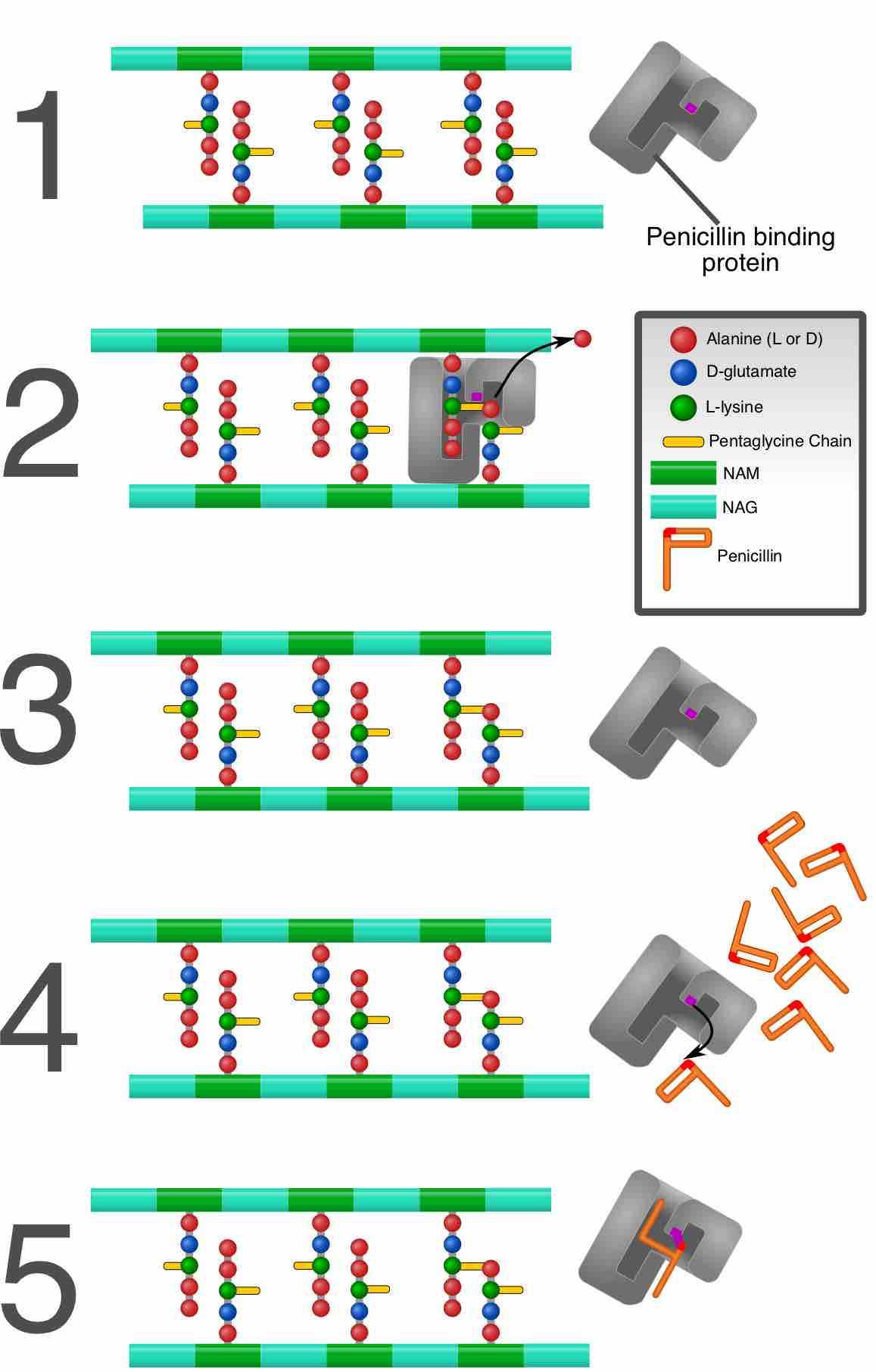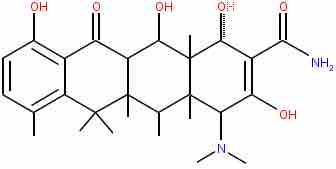Antibiotics can be divided into two classes based on their mechanism of action. Bactericidal antibiotics kill bacteria; bacteriostatic antibiotics inhibit their growth or reproduction.
One way that bactericidal antibodies kill bacteria is by inhibiting cell wall synthesis. Examples include the Beta-lactam antibiotics (penicillin derivatives (penams) ), cephalosporins (cephems), monobactams, and carbapenems) and vancomycin. Other ways that bactericidal antibiotics kill bacteria include inhibiting bacterial enzymes or protein translation. Other batericidal agents include daptomycin, fluoroquinolones, metronidazole, nitrofurantoin, co-trimoxazole and telithromycin. Aminoglycosidic antibiotics are usually considered bactericidal, although they may be bacteriostatic with some organisms. The MBC (minimum bactericidal concentration) is the minimum concentration of drug which can kill 99.99% of the population.

Mechanism of penicillin inhibition
Penicillin and most other β-lactam antibiotics act by inhibiting penicillin-binding proteins, which normally catalyze cross-linking of bacterial cell walls.
Bacteriostatic antibiotics limit the growth of bacteria by interfering with bacterial protein production, DNA replication, or other aspects of bacterial cellular metabolism. This group includes: tetracyclines , sulfonamides, spectinomycin, trimethoprim, chloramphenicol, macrolides and lincosamides. They must work together with the immune system to remove the microorganisms from the body. However, there is not always a precise distinction between them and bactericidal antibiotics. High concentrations of some bacteriostatic agents are also bactericidal. The MIC (minimum inhibitory concentration) is the minimum concentration of drug which can inhibit the growth of the microorganism.

Structure of tetracycline
Tetracycline antibiotics are protein synthesis inhibitors, inhibiting the binding of aminoacyl-tRNA to the mRNA-ribosome complex. They do so mainly by binding to the 30S ribosomal subunit in the mRNA translation complex.
Further categorization is based on their target specificity. "Narrow-spectrum" antibacterial antibiotics target specific types of bacteria, such as Gram-negative or Gram-positive bacteria, whereas broad-spectrum antibiotics affect a wide range of bacteria, usually both gram positive and gram negative cells. Following a 40-year hiatus in discovering new classes of antibacterial compounds, three new classes of antibacterial antibiotics have been brought into clinical use: cyclic lipopeptides (such as daptomycin), glycylcyclines (such as tigecycline), and oxazolidinones (such as linezolid).